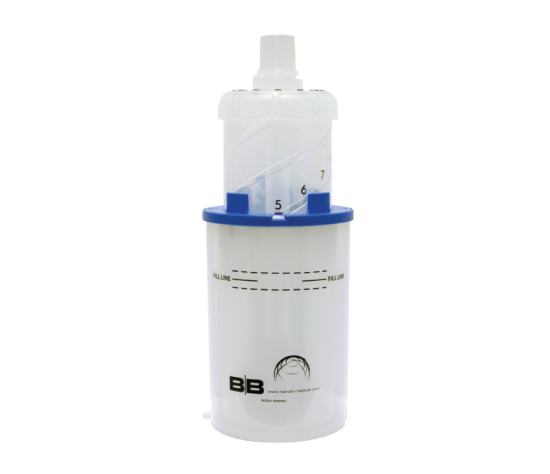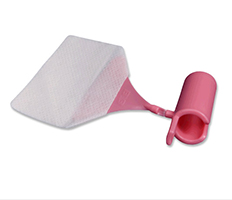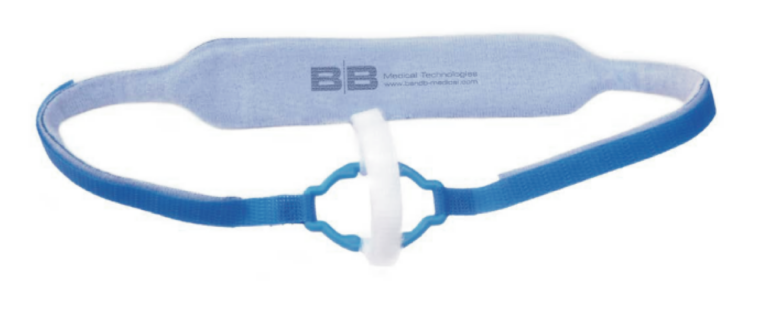Plenty of devices are helpful in pediatric respiratory care, but when it comes to neonatal respiratory care, nothing can beat the effectiveness and lasting power of the Bubble CPAP system. Now, what becomes a game changer when comparing bubble CPAP vs. regular CPAP and how the Bubble CPAP machine marks a breakthrough in respiratory care—that’s what this insightful take is all about.
According to Erkinge, the veterinary resource in pediatric respiratory care
“We are doing all in our power to prevent invasive breathing and intubation. That was, therefore, a crucial factor (in turning to a bubble CPAP system). I have direct experience with how every choice may have a significant impact on a child’s life because I work in healthcare”
The bubble CPAP machine uses short binasal prongs to supply a mixed, humidified gas source to the baby’s airway. As the gas leaves the tube, it forms bubbles that produce tiny oscillations in airway pressure, preventing alveolar decruitment and enhancing breathing effort.
At B&B Medical Technologies, we believe in selling handier products when a patient’s life is on the brink. After all, nothing is more costly and precious than human life.
Let’s dive in to learn why Bubble CPAP has become a game-changer in pediatric care.
Understanding Bubble CPAP & Its Role in Pediatric Respiratory Care
Bubble CPAP is regarded as a gentle ventilatory technique that avoids lesions such as atelectrauma (repeated opening and collapse of the alveoli), barotrauma (high pressure), biotrauma (airway intubation), and volutrauma that are brought on by traditional mechanical ventilation (overstretching of the alveoli)
Through the use of prongs or masks, this device maintains the airway patent, increases functional residual capacity, re-expands collapsed alveoli, redistributes air uniformly, promotes positive end-expiratory pressure (PEEP) linked to oscillations caused by bubbles, lowers respiratory effort, and improves respiration regularity.
Additionally, by widening the airways, the constant flow stimulates the hypopharynx, activating peripheral receptors that regulate breathing by acting on the respiratory centres (Moretti et al., 2008; Pantalitschka et al., 2009).
Advantages of Bubble CPAP Explained
#1. Improving Breathing Naturally
One of the main advantages of the Bubble CPAP machine is its ability to enhance standard breathing patterns. By receiving constant positive airway pressure, infants can breathe more efficiently and save energy that would otherwise be used to overcome airway resistance. This care is essential for premature babies whose respiratory systems are still growing.
#2. Lowering the Risk of Lung Damage
The Bubble CPAP system works at lower airway pressures than conventional mechanical breathing, which can harm the lungs because of high pressures. In addition to promoting healthier lung development in susceptible newborns, this dramatically lowers the incidence of ventilator-associated lung injury.
#3. Reducing Chronic Lung Disease Incidence
Research shows that Bubble CPAP setup can reduce the prevalence of long-term lung conditions such as bronchopulmonary dysplasia (BPD). This technique helps shield delicate lung tissues from possible harm by reducing the need for intrusive ventilation and encouraging natural breathing efforts.
#4. Enabling the Shift to Self-Sufficiency in Breathing
Bubble CPAP is essential for helping babies make the switch to autonomous breathing. As they grow older, it becomes simpler for babies to breathe independently because of the constant assistance it gives, stabilizing the lungs’ functional residual capacity.
#5. Increasing Oxygen Intake
Adequate oxygenation is essential for babies experiencing respiratory distress. By stabilizing the chest wall and increasing lung volume, the Bubble CPAP setup improves oxygenation, guarantees sufficient oxygen supply to critical organs, and promotes general growth and development.
#6. Versatility in Clinical Settings
Because of its adaptability, bubble CPAP can be useful in various clinical settings, such as emergency rooms, pediatric wards, and neonatal intensive care units (NICUs). Because of its portability, medical professionals can safely relocate patients within a hospital setting or give therapy at the patient’s bedside without interfering with breathing support. Because of its versatility, bubble CPAP is a vital technique for treating acute respiratory insufficiency in children.
#7. Evidence-Based Effectiveness
Compared to conventional respiratory support techniques, recent research has shown that bubble CPAP is helpful for various pediatric patient populations, improving both clinical outcomes and patient satisfaction ratings.
Bubble CPAP vs. Regular CPAP: What’s Best?
When comparing Bubble CPAP vs regular CPAP, several key differences emerge:
| Feature | Bubble CPAP | Regular CPAP |
| Invasiveness | Non-invasive | Can be invasive with intubation |
| Pressure Levels | Lower pressures | Higher pressures |
| Comfort | Generally more comfortable | May cause discomfort |
| Risk of Lung Injury | Lower risk | Higher risk due to mechanical ventilation |
| Ease of Use | Simple setup | More complex equipment |
The Role of B&B Medical Technologies
B&B Medical Technologies is a well-known brand in this industry. Healthcare professionals worldwide rely on their Bubble CPAP systems because of their dependability, simplicity, and longevity. Their systems are an excellent option for the following reasons:
Customizable Pressure Settings – Because each patient differs, B&B’s technologies enable accurate changes to suit specific requirements.
User-Friendly Design – Their solutions are perfect for hectic healthcare settings because they are easy to set up and maintain.
Thoroughly Tested – At B&B Medical Technologies, we guarantee our products fulfill the strictest safety and effectiveness requirements through a comprehensive clinical testing process.
Looking Ahead!
While many healthcare professionals recognize bubble CPAP as a valuable tool for managing pediatric respiratory care, its numerous hidden benefits extend beyond basic functionality alone—encompassing aspects such as enhanced comfort levels, reduced risks associated with invasive procedures, versatility across clinical settings, cost-effectiveness measures among others—all contributing positively towards improved patient outcomes within this vulnerable population.
Pediatric respiratory care will be innovative, patient-centered, and noninvasive in the future. Bubble CPAP has already shown promise in-home care, transport settings, and intensive care units. Its role will only increase with continued improvements in functionality and design.
If you work as a medical professional, you might want to consider using Bubble CPAP. As a parent, you know that this technology provides a kind and practical answer for kids in need. If we work together, every child can have the opportunity to breathe comfortably and enjoy a fuller life.
We’re making a profoundly human decision, B&B Medical Technologies, and a professional one.


